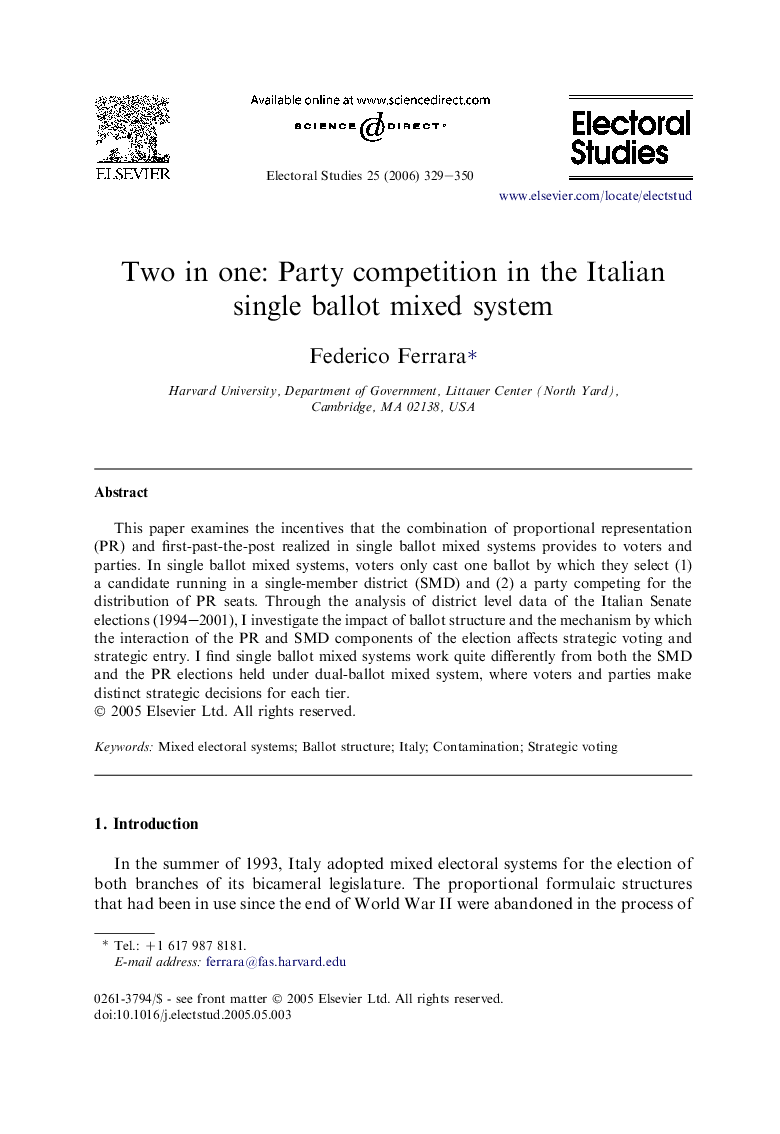| Article ID | Journal | Published Year | Pages | File Type |
|---|---|---|---|---|
| 1052392 | Electoral Studies | 2006 | 22 Pages |
This paper examines the incentives that the combination of proportional representation (PR) and first-past-the-post realized in single ballot mixed systems provides to voters and parties. In single ballot mixed systems, voters only cast one ballot by which they select (1) a candidate running in a single-member district (SMD) and (2) a party competing for the distribution of PR seats. Through the analysis of district level data of the Italian Senate elections (1994–2001), I investigate the impact of ballot structure and the mechanism by which the interaction of the PR and SMD components of the election affects strategic voting and strategic entry. I find single ballot mixed systems work quite differently from both the SMD and the PR elections held under dual-ballot mixed system, where voters and parties make distinct strategic decisions for each tier.
